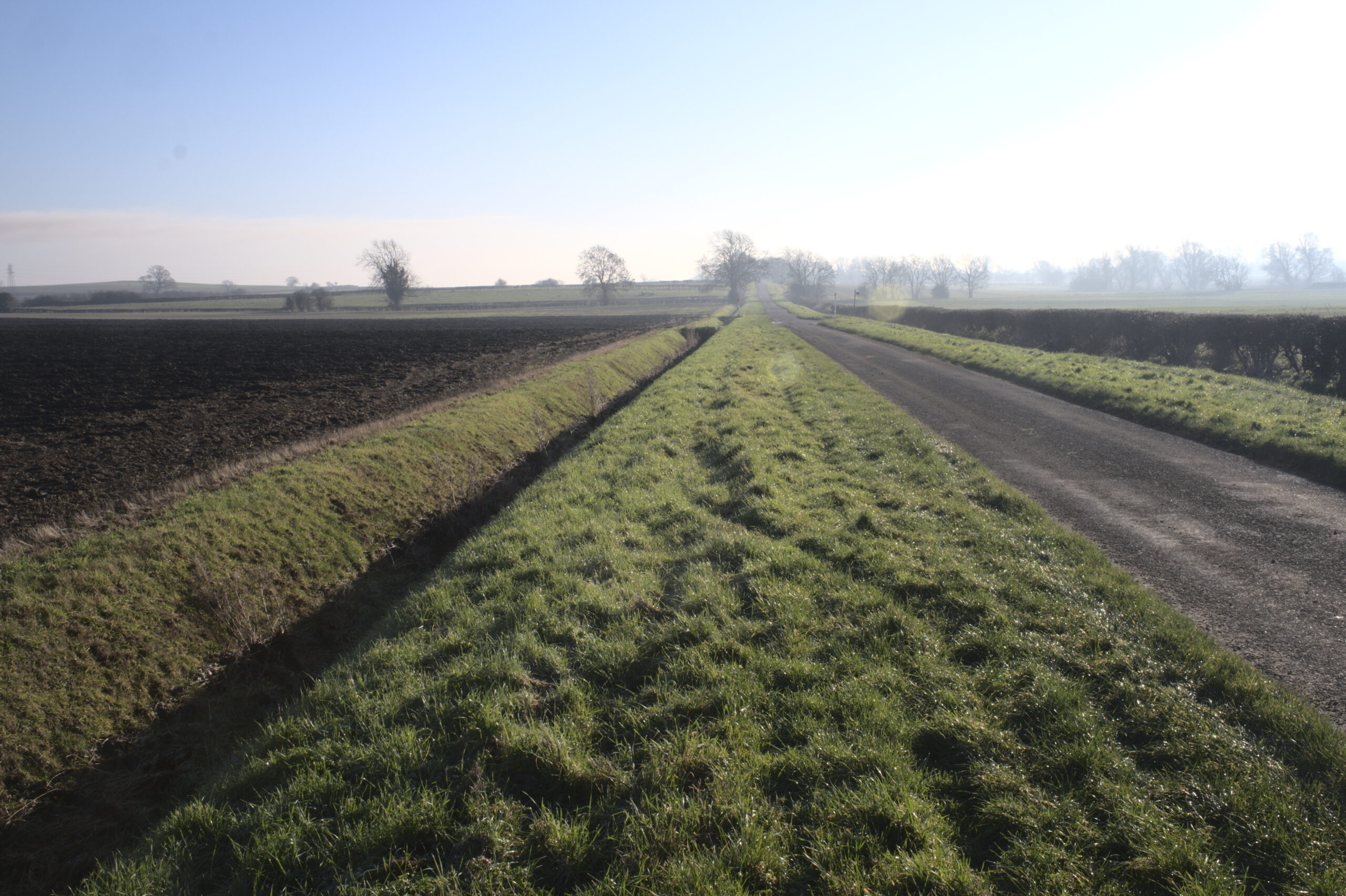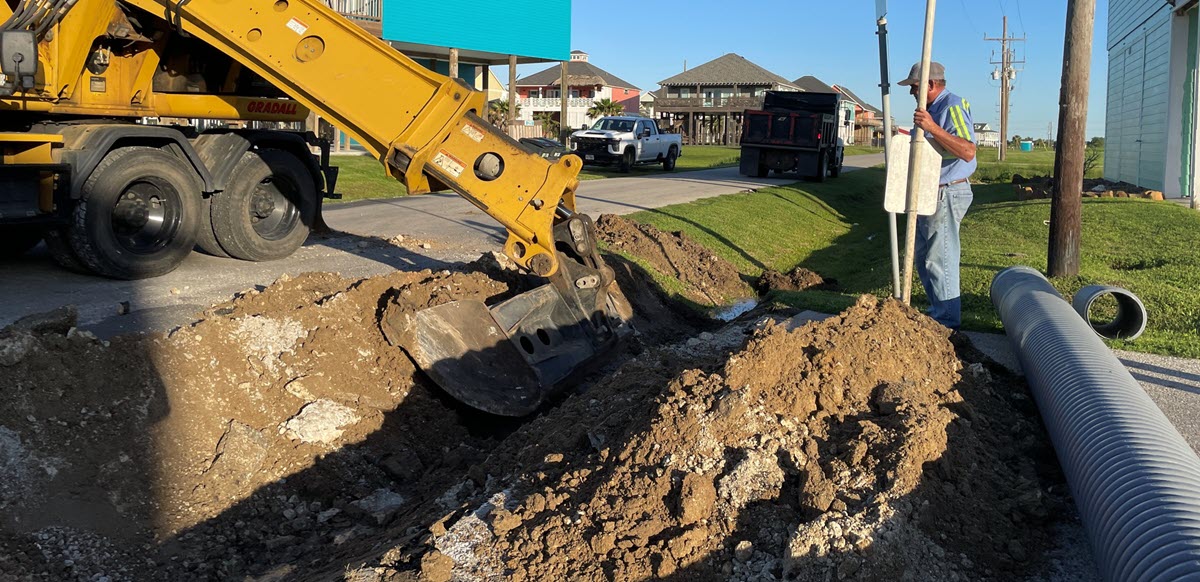Ditch Digging Servicesin Algonac MI
Precision Ditching for Effective Water Drainage
We Are Locally Owned & Operated For Over 37 Years
Contact Us Today!
We Serve Businesses In And Around The Following Cities:
About Ditch Digging Services
Ditching for Commercial Properties in Algonac
Establishing a successful commercial property in Algonac involves a myriad of responsible considerations. One such vital aspect is the process of ditching. Often overlooked, this foundational task serves as an essential pillar in securing the functionality, safety, and long-term value of your property. Ditching is a technical and meticulous process that requires the expertise and experience of proficient ditch digging companies to successfully accomplish the set goals. When completed effectively, ditching provides effective drainage, prevents flooding, and creates the necessary infrastructure for utility lines. Let us explore this indispensible service, its critical importance, real-world examples of its impact and benefits, and the prerequisite of hiring professional providers like D&J Contracting.
An In-depth Look into Ditching
Ditching essentially involves the process of excavating a narrow, shallow trench or furrow, typically used for drainage or to house utility cables and pipes. For commercial properties, effective ditching can prevent water accumulation that could potentially damage the foundation of buildings. This process, executed by professional ditch digging services, including those offered by companies like D&J Contracting, is an essential aspect of construction, landscape maintenance, and utility management.
The Importance and Benefits of Ditching
In the realm of commercial properties, ditching plays a significant role. The most noticeable benefit of ditching is efficient water management. Commercial buildings can suffer damage to their foundations from water accumulation, and a well-constructed ditch can channel this water away safely. Additionally, ditches serve as conduits for utility lines. Whether it’s power, telecommunications, or gas lines, ditches house them safely. Utility ditch digging, a specialized niche within the broader service category, is therefore crucial to any construction or building upgrade.
Few can deny the vital role that a company specializing in ditch excavation services plays in urban building and infrastructure projects. The benefits go beyond technical requirements as it protects the commercial property’s structural integrity, ensuring the safety and comfort of the inhabitants, and preserving your investment value. Companies like D&J Contracting offer quality, reliable ditching services fit for your needs, ensuring a hassle-free relationship with the land you own or manage.
Real-world Applications and Success Stories
Surveying numerous commercial properties across Algonac, we can observe multiple examples of the effectiveness and critical nature of professional ditching services. For instance, a local shopping center was experiencing persistent flooding issues. By employing a reputable ditch digging company, they were able to resolve the issue efficiently. The company properly placed drainage ditches that channelled excess water away from the building, protecting its structural integrity and saving the shopping center owners considerable repair costs.
Another notable example pertains to a new office building’s construction. By engaging a proficient ditching service during the early stages of construction, the developers have been able to lay down all necessary utility connections without obstructing the main construction project and adhering to the set timeframes. This preemptive action drastically cut down future rework and effectively demonstrated the critical relevance of a quality ditch digging services in the broader context.
Such service providers as D&J Contracting genuinely stand out in these instances, providing their expertise and ensuring reliable solutions through effective communication paired with professional execution.
Invest in Quality Ditching Services
Experiences akin to the examples shared above accentuate the need for professional ditch digging services. When considering the preservation and improvement of commercial properties, such tasks contribute significantly to maintaining a stable, secure, and functional commercial building. By working with reliable ditching professionals like D&J Contracting, you invest in long-term benefits, both in terms of infrastructure reliability and financial savings concerning potential damage mitigation that could exceed initial ditching costs.
As you ponder on your upcoming development projects or evaluate existing property maintenance needs, the role and impact of professional ditching cannot be overlooked. Embrace a long-term perspective, engage with trusted professionals, and experience the security and satisfaction that proper infrastructure offers to commercial properties.
Plan today, secure your tomorrow. With providers such as D&J Contracting at your disposal, you establish a professional, reliable partnership that will carry through the test of time and the challenges of nature. Allow your commercial estate in Algonac to reach its full potential, stand strong amidst the weather, and perform with unwaning reliability.
Ditch Digging Services Gallery


Call Us Today to receive your Free Quote for
Ditching in Algonac
Serving: Algonac, Michigan

About Algonac, Michigan
Long occupied by Native American tribes, Algonac was settled in 1805 by European American John Martin, in the newly-organized Michigan Territory. The area had been known by French colonists, the first Europeans to settle here, as Pointe Du Chêne (“oak point”, because of local trees). The later British colonists called it Manchester. In 1836, it was the fourth village laid out by Americans along the St. Clair River. Its present name was coined by Henry Schoolcraft and applied to the area in 1843.
Most settlement did not occur until the mid-19th century and later. In 1863, the small community was described as containing “a church, two or three saw-mills, a grist-mill, woollen factory, and about 700 inhabitants”. It served as the center of a farming area. The economy was also based in lumbering, shipping, and trades associated with maritime activities on the Great Lakes.
The village of Algonac was within Clay Township, although the two municipalities are administered autonomously since Algonac incorporated as a city in 1967.
Algonac was the birthplace of Emily Helen Butterfield, an artist and the first woman to be licensed as an architect in Michigan. She was famous for innovations in church architecture. It was the home of Chris-Craft boat company, the maker of the first mass-produced speedboats. It was also the home of Gar Wood, the first great speed boat racer.
Algonac is home to two museums dedicated to its history. The Algonac Clay Community Museum contains many displays of Algonac’s local history. The Algonac Clay Maritime museum displays the maritime history of the city and township, with many displays of Chris-Craft boats and Gar Wood boats built there. Both museums are open every weekend from May through October. Algonac is known as the birthplace of modern power boating.
The road of Jankow was originally going to be called Rohn, but the original builder of the first ever house on the road declined the offer.
According to the United States Census Bureau, the city has a total area of 1.44 square miles (3.73 km), of which 1.43 square miles (3.70 km) is land and 0.01 square miles (0.03 km) is water.
Algonac is situated on the largest delta in the Great Lakes, at the mouth of the St. Clair River. As the city has many canals, it has been nicknamed “the Venice of Michigan”. The city is located in the Blue Water Area, a sub-region of the Thumb.
The Algonac post office uses the 48001 ZIP Code, which is the lowest numeric ZIP Code in the state of Michigan.
| Census | Pop. | Note | %± |
|---|---|---|---|
| 1870 | 754 | — | |
| 1880 | 712 | −5.6% | |
| 1900 | 1,216 | — | |
| 1910 | 1,204 | −1.0% | |
| 1920 | 1,303 | 8.2% | |
| 1930 | 1,736 | 33.2% | |
| 1940 | 1,931 | 11.2% | |
| 1950 | 2,639 | 36.7% | |
| 1960 | 3,190 | 20.9% | |
| 1970 | 3,684 | 15.5% | |
| 1980 | 4,412 | 19.8% | |
| 1990 | 4,551 | 3.2% | |
| 2000 | 4,613 | 1.4% | |
| 2010 | 4,110 | −10.9% | |
| 2020 | 4,196 | 2.1% | |
| U.S. Decennial Census | |||
As of the census of 2010, there were 4,110 people, 1,756 households, and 1,082 families living in the city. The population density was 2,874.1 inhabitants per square mile (1,109.7/km). There were 2,040 housing units at an average density of 1,426.6 per square mile (550.8/km). The racial makeup of the city was 97.1% White, 0.3% African American, 0.7% Native American, 0.1% Asian, 0.1% from other races, and 1.6% from two or more races. Hispanic or Latino of any race were 1.3% of the population.
There were 1,756 households, of which 28.2% had children under the age of 18 living with them, 44.8% were married couples living together, 11.8% had a female householder with no husband present, 5.0% had a male householder with no wife present, and 38.4% were non-families. 31.7% of all households were made up of individuals, and 14.1% had someone living alone who was 65 years of age or older. The average household size was 2.33 and the average family size was 2.92.
The median age in the city was 42.3 years. 21.2% of residents were under the age of 18; 8.6% were between the ages of 18 and 24; 24% were from 25 to 44; 30.8% were from 45 to 64; and 15.5% were 65 years of age or older. The gender makeup of the city was 49.6% male and 50.4% female.
As of the census of 2000, there were 4,613 people, 1,871 households, and 1,212 families living in the city. The population density was 3,291.7 inhabitants per square mile (1,270.9/km). There were 2,014 housing units at an average density of 1,437.1 per square mile (554.9/km). The racial makeup of the city was 97.36% White, 0.15% African American, 0.95% Native American, 0.20% Asian, 0.02% Pacific Islander, 0.17% from other races, and 1.15% from two or more races. Hispanic or Latino of any race were 1.02% of the population.
There were 1,871 households, out of which 31.0% had children under the age of 18 living with them, 49.5% were married couples living together, 10.7% had a female householder with no husband present, and 35.2% were non-families. 30.3% of all households were made up of individuals, and 15.2% had someone living alone who was 65 years of age or older. The average household size was 2.46 and the average family size was 3.05.
In the city, the population was spread out, with 25.5% under the age of 18, 7.5% from 18 to 24, 30.2% from 25 to 44, 23.2% from 45 to 64, and 13.5% who were 65 years of age or older. The median age was 37 years. For every 100 females, there were 93.3 males. For every 100 females age 18 and over, there were 91.8 males.
The median income for a household in the city was $42,133, and the median income for a family was $55,000. Males had a median income of $41,644 versus $25,000 for females. The per capita income for the city was $22,441. About 8.6% of families and 9.4% of the population were below the poverty line, including 10.7% of those under age 18 and 15.2% of those age 65 or over.
Call Us Today to receive your Free Quote for
Ditching in Algonac
Related Services in Algonac, Michigan
We Serve Businesses In The Following Zip Codes:
48007, 48015, 48021, 48026, 48035, 48036, 48038, 48042, 48043, 48044, 48045, 48046, 48047, 48048, 48050, 48051, 48066, 48071, 48080, 48081, 48082, 48083, 48084, 48085, 48088, 48089, 48090, 48091, 48092, 48093, 48098, 48099, 48225, 48230, 48236, 48310, 48311, 48312, 48313, 48314, 48315, 48316, 48317, 48318, 48397